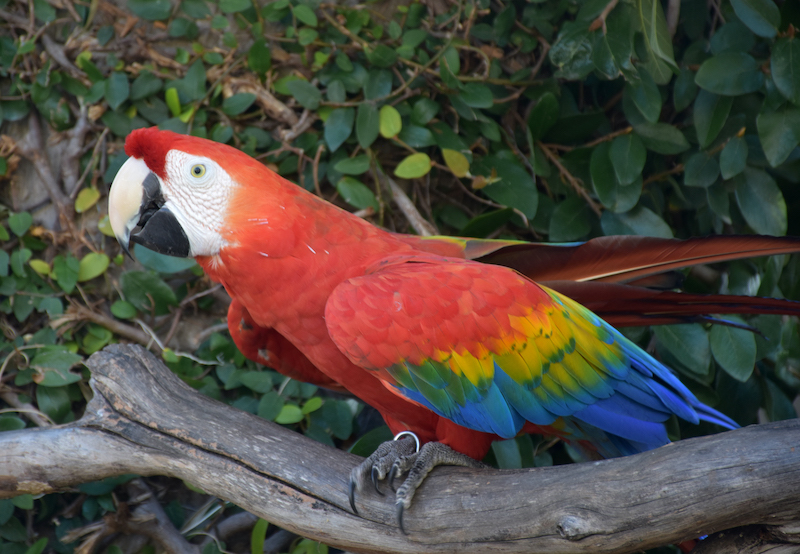The Scarlet Macaw (Ara macao), also known as the red macaw, is one of Costa Rica’s most spectacular birds. Its vibrant plumage, loud call, and graceful flight make it a true symbol of the tropical forest. In this article, we’ll explore its habitat, behavior, conservation status, and the best places to see it in Costa Rica.
- What are scarlet macaws? Scarlet macaws are large birds in the parrot family. They measure between 85 and 95 cm and can live for over 40 years. Their bright red feathers are complemented by yellow and blue tones, making them unmistakable in the wild.
- Where do they live in Costa Rica? In Costa Rica, scarlet macaws are mainly found in coastal Pacific regions, particularly in: • Carara National Park • Curú Biological Reserve • The Osa Peninsula (including Corcovado National Park)
- Diet and behavior Their diet consists primarily of fruits, seeds, and nuts. They are monogamous and are often seen in pairs or small groups. They nest in tall trees, often using natural cavities.
- Conservation: a story of hope For decades, scarlet macaws were endangered due to deforestation and illegal wildlife trade. Fortunately, thanks to conservation and reintroduction efforts, their numbers are now recovering. Organizations like the Macaw Recovery Network and The Ara Project have played a key role in their protection.
- How to see them in the wild For nature lovers, spotting a scarlet macaw in its natural habitat is an unforgettable experience. We recommend: • Taking a guided birdwatching tour with local experts. • Visiting reserves where their habitats are actively protected. • Respecting conservation guidelines: don’t feed them or get too close.
Scarlet macaws are not only a dazzling splash of color in the Costa Rican skies—they’re also a powerful reminder of the importance of preserving our biodiversity. Protecting them means preserving a vital part of Costa Rica’s natural soul.


